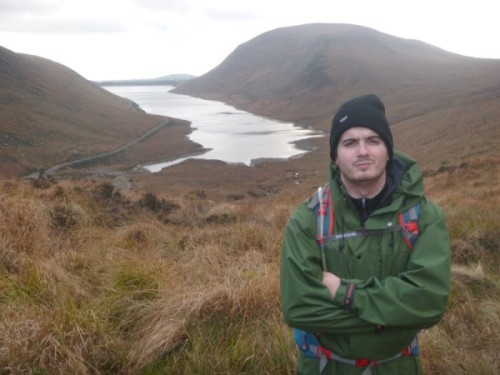
This jacket feels like a game changer. The technology on the inside translates to real benefits in the hills. I reach for the Osprey on every trip now, while my previous coat rests on its hanger at more than twice the price.
In October 2013 Aclimatise sent us their Osprey Jacket to review. Since then the jacket has been worn constantly on many trips in a range of conditions, from misty wet hikes across the Mournes to driving rain and hail in the Scottish Highlands. Below are my thoughts on this jacket, its strengths and weaknesses and what to expect from it.
A new waterproof fabric system
The two main contenders in waterproof fabrics at the moment are Gore-Tex and eVent. While Gore-Tex has excellent water resistance and warmth, it has historically been plagued by breathability issues, the warmth being retained by holding an amount of sweat vapour inside the jacket.
eVent on the other hand is direct-venting and therefore much more sweat vapour escapes. This however leads to a much colder feeling shell due to evaporative cooling. (which is why we sweat in the first place) Very recently Gore have released Goretex Pro, which is direct venting like eVent, however suffers from the same issue of feeling colder.
The Aclimatise Osprey uses Aclimatise’s own waterproof system named Apt Evolution Lisboa. The system is direct venting like eVent and GoreTex pro. However it also has 30% aluminium weave included in the membrane, which reflects body heat back to the wearer, allowing the dryness of direct venting technology without the drawback of a colder feeling jacket.
design / features overview
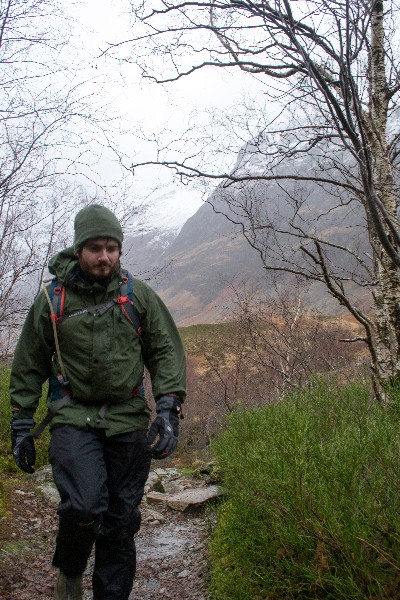
Osprey jacket and Aclimatise in use at Glen Nevis, Scotland
The Osprey is a full length waterproof and wind proof mountain jacket. As can be seen above the fit extends below the hip for added protection.
The full length main zip is a sturdy YKK zip which benefits from a generous storm flap to prevent water intake. While I have not noticed water intake even with the storm flap open, it is a welcome additional safeguard against both rain and wind. The storm flap is closed by a series of sturdy buttons which give a reassuring click when secured.
Behind the storm baffle also lies a chest pocket with ample room for a map or other quick-access essentials.
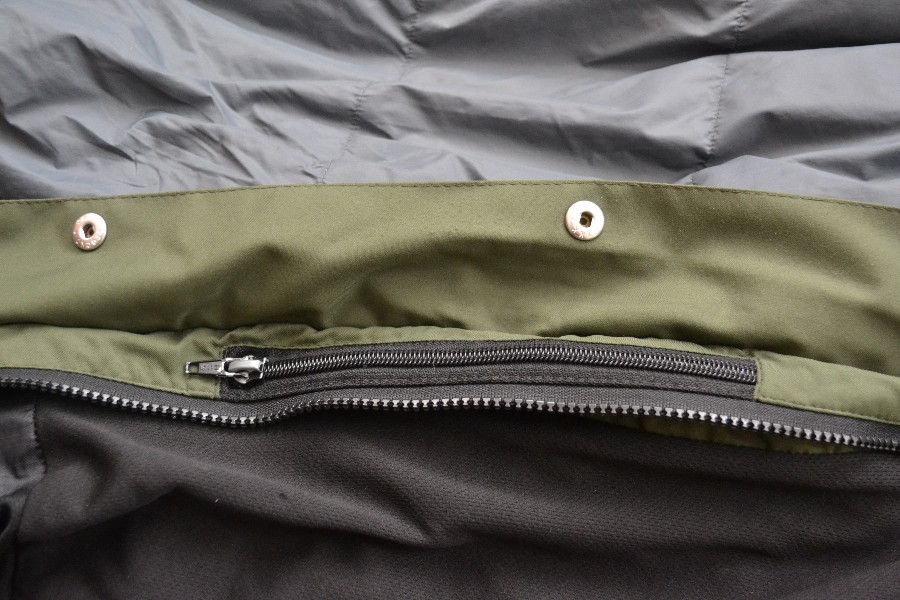
Full length zip with storm flap and chest pocket
The hip pockets also benefit from a YKK zip with waterproof cover, a generous storm flap and a zip puller for ease of reach. The positioning of the side pockets however do require release of your rucksack’s hip belt for access.
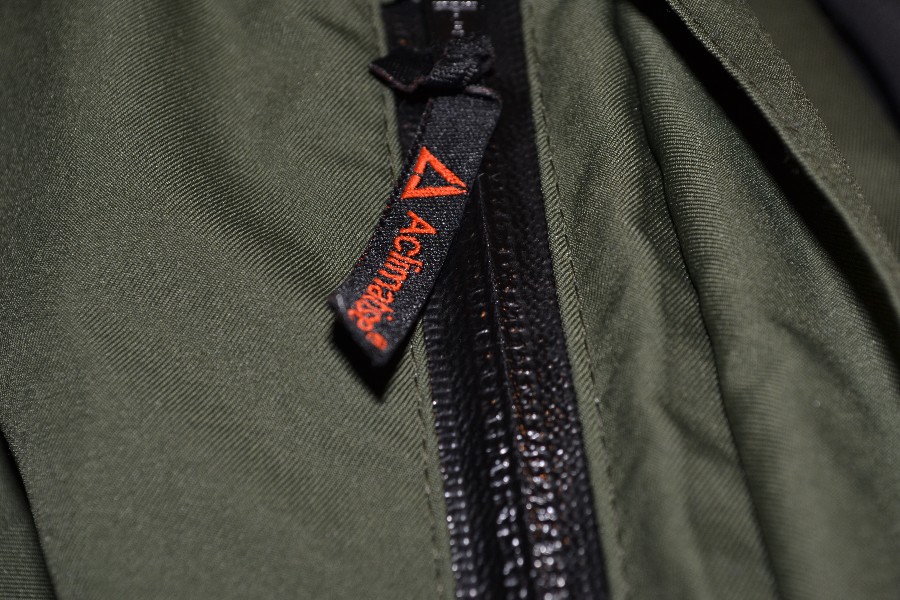
Hip pocket with waterproofed zip and storm baffle
The jacket also benefits from a comfortable, easily adjusted hood with five adjustment toggles to help find a more comfortable fit. I tend to leave with my hood loose and tighten it as required as the weather changes. The hood moves well with the head when tightened correctly and can easily be loosened slightly using the side toggles to let some air in during a long hike in the rain.
There are also toggles around the hem to adjust the fit however I have found these largely unnecessary as the jacket is secured tight to the body by my rucksack’s hip belt. These would certainly be useful when hiking without a pack.
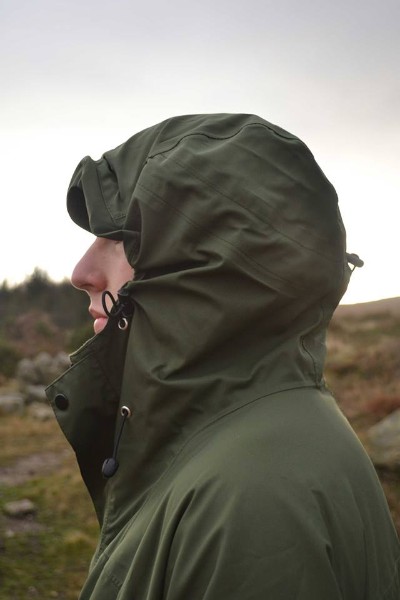
Fellow HikersBlog author Oisin modelling the hood – Note the side toggles at the cheek allowing adjustment of the fit around the face.
The inner fabric is made of the same soft polyester fabrics found in most baselayers and is essentially a baselayer built into the garment. This definitely adds to the comfort of the jacket and I have worn it against the skin while drying a base layer a few times. I found it to be highly preferable to the cheap mesh found even in many expensive high end jackets. A shell fabric is used for the inner of the hood which helps the hood move with your head when active.
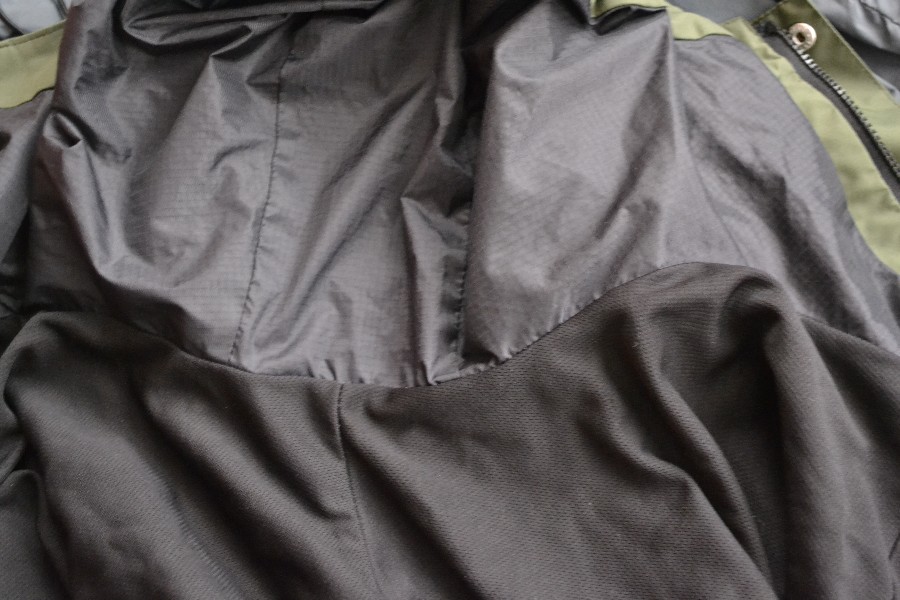
Soft polyester inner body with shell inner hood
The cuffs are secured by a velcro strip with a solid rubber closure featuring the Aclimatise branding. This is a welcome addition as the cuff closure on my previous jacket had partially torn during a trip once, whereas the rubber on the Osprey feels solid. Also the cuff stays well positioned and doesn’t loosen or open even when held over heavy gloves.
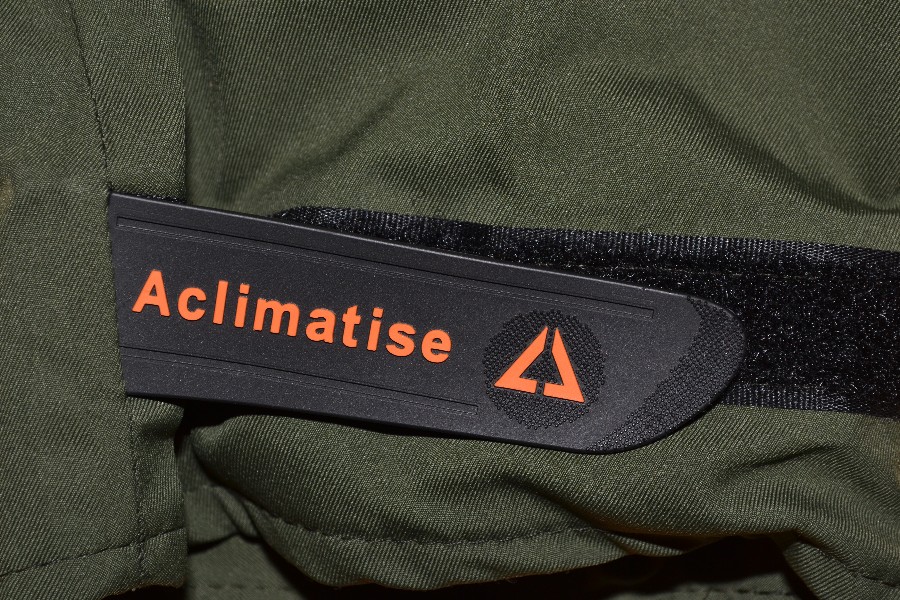
Sturdy rubber cuff closure
Field Notes
Water Resistance
The first thing of note with any waterproof jacket is of course its water resistance. In lengthy trips in both Northern Ireland and Scotland the jacket has been exposed to heavy, driving rain on numerous occasions. Even after the point of wet-out of the outer fabric, the inner remains dry and comfortable.
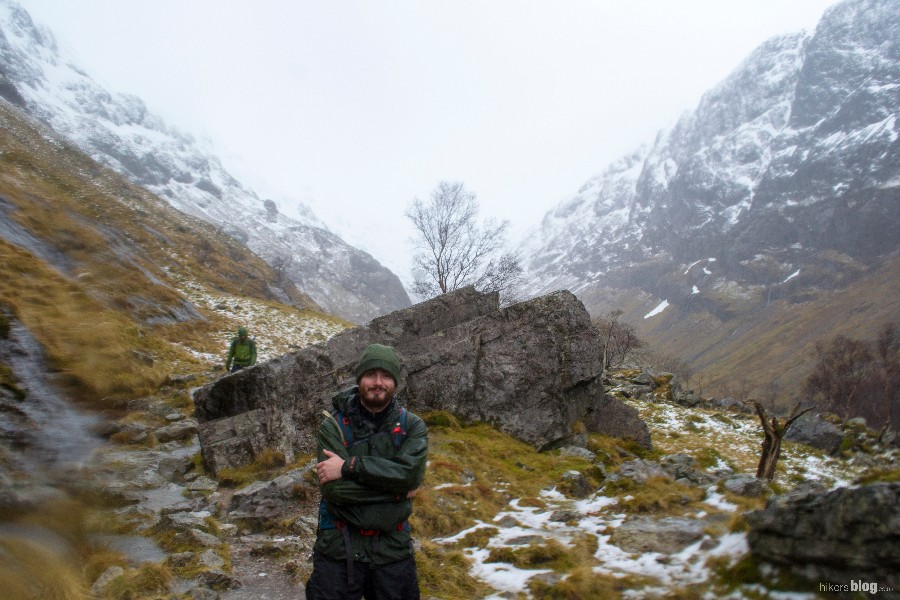
Pitted against the Scottish rain in Glencoe
The photos above and below were taken after a hike in Glencoe which saw quite a bit of cold, heavy rain. Even everyone’s camera lenses got their share of rain. Even though the outer fabric is no longer beading in the above photo the jacket was dry as snuff and remarkably warm. When others reach for their fleeces immediately after stopping to eat, the reflective heat from the Osprey is usually enough to keep me warm on its own. This works well for me as a wet base layer from multiple jacket changes during the day only leads to more condensation in the bivvy bag at night.
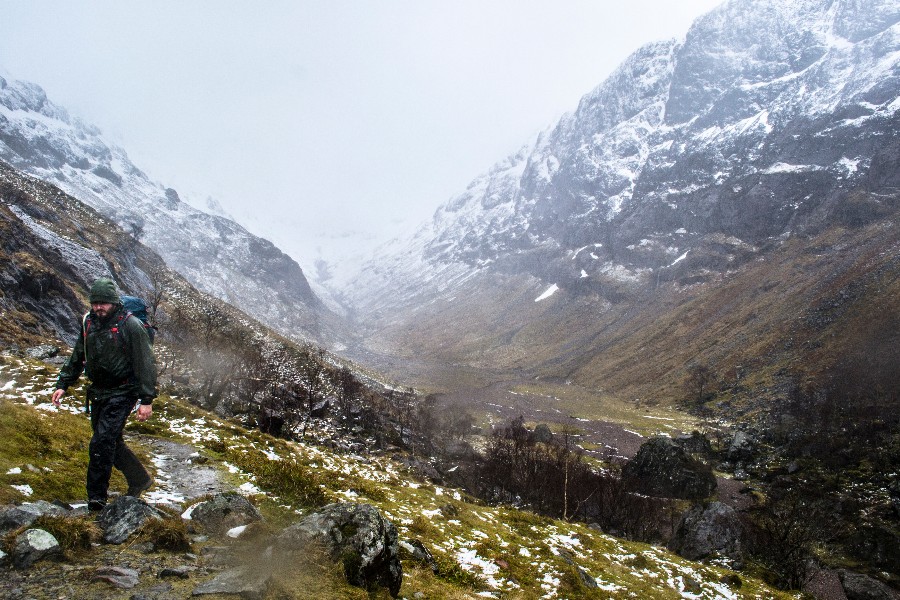
Heavy rain in Glencoe – it was more fun than it looks!
Breathability
One feature that also got tested heavily was the jacket’s breathability. Due to the rapid changes in mountain weather in the UK and Ireland I frequently wear the Osprey even when there is little chance of rain. The jacket doesn’t feel clammy or overly hot during exertion at the initial stages of a hike and it also provides welcome wind protection when higher, more exposed levels are reached. One interesting aspect Aclimatise have cited about the jacket is that it blocks incoming radiant heat, so can be worn for protection on a sunny day. Intrigued by this, I put this to the test during a sunny day in the Mournes.
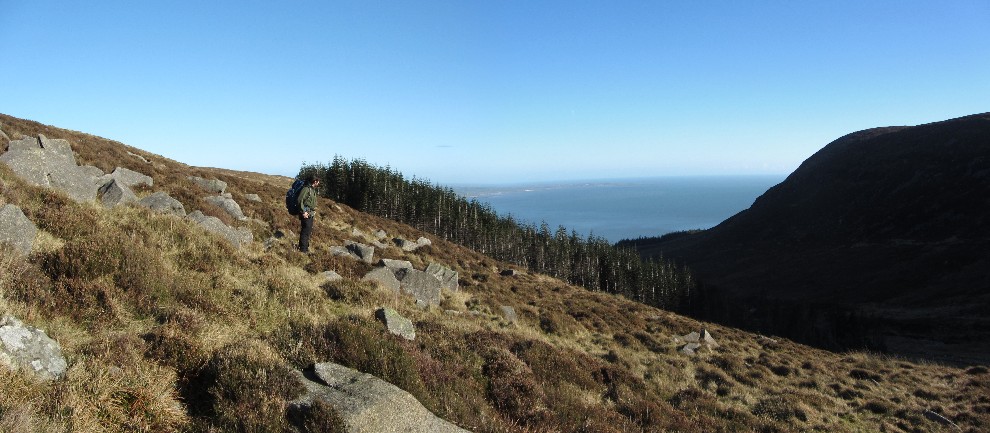
A sunny day in the Mourne Mountains – rare but welcome
While I certainly wasn’t exposed to searing thirty degree heat, the jacket gave me protection from the wind at times when it picked up, without heating to the point where I felt like I had to remove it when the wind died down and the sun beat down on me. As mentioned before I’m not a fan of stopping to change between jackets during a hike – on this trip my friend John switched between his eVent shell and his fleece at least five or six times. I wore the Osprey for the entirety of the day and only layered up upon reaching camp for the evening. Interestingly when I got back to camp that evening, despite a full day of hiking with full packs, the inner fabric was relatively dry on the inside. Breathability with this jacket is definitely one of its strong points.
Warmth
While this isn’t intended as an insulating jacket, the heat reflected by the woven aluminium in the membrane adds a versatility which allows you to wear the jacket alone with a base layer in situations where you might otherwise need to add and remove insulation layers throughout your trip.
One trip which made the benefits of the reflective aluminium really noticeable was a full day hike last year. The walk was a silent valley circuit via Cairn and Slieve Muck with my friend Chris. Chris set a formidable pace, with our only substantial stop being a 20 minute stop for food at the base of Cairn. Even with a full day’s fast paced walking and all the energy drain that came with it, I felt warm walking back to silent valley in the darkness in the final hours of our trip. When pushed with high exertion and low calorie intake for an extended period, the body tends to be less able to generate its own heat – having some of that heat retained is a definite plus, especially considering a full insulated mid-layer would be too much for me while active.
Fit
Here is one area where the jacket falls down a little. If you’re slim or athletic, you might find the lack of a tapered fit a little irritating. I find there’s a lot of excess room in the waist, which is undoubtedly contributing to the overall weight of the jacket. Perhaps Aclimatise will bring out a “slim fit” pattern which addresses this in future.
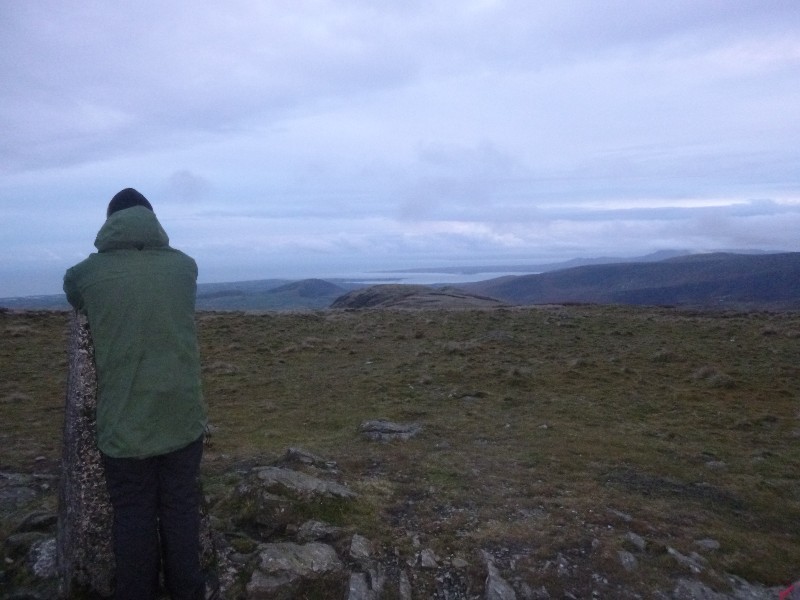
Muck trig point, just before sunset
Conclusions
The Osprey is an extremely well made jacket. The general finish is superbly impressive, particularly at the jacket’s price point. The seams, stitching, zips, buttons and toggles feel solid and the use of proper base-layer polyester on the inner is a comfortable and impressive design decision I am yet to see with other brands.
The water resistance performance is top notch, while the high breathability and heat reflection lend a versatility to the jacket which is a real bonus in the hills. My need to repeatedly add and remove a fleece layer is a thing of the past now. The only minor flaw I could find in this jacket is the need to unclasp your hip belt to access the hip pockets. The addition of an extra chest pocket on the right side might make this less of an issue.
The fit of the jacket is a little on the baggy side which won’t please ultralighters, this would be the only significant issue I can find with this coat.
This jacket feels like a game changer, the technology on the inside translates to real benefits in the hills and I reach for the jacket on every trip now, while my previous coat rests on its hanger at more than twice the price.
Available from Aclimatise here for £160.
1 Year Update
It’s been one year since this review was written and I’m happy to say the Aclimatise Osprey continues to exceed my expectations. It remains my go-to waterproof coat and still comes with my highest recommendation.
2.5 Year Update
It has now been two years and six months since this review was first published. The jacket continues to perform well. While it is a weighty jacket, I still reach for it when I need to know for sure I’ll be kept dry. If I know it’s likely to be both cold and wet, the Osprey gives me the confidence to wear down insulation and know I won’t wet it out.

